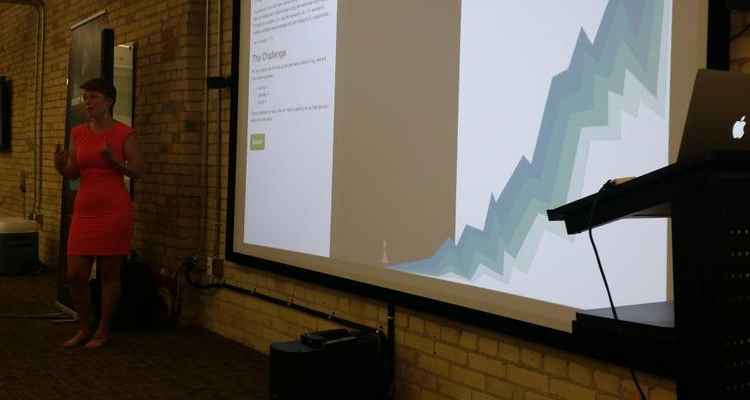Exposure helps, even if it’s just talk for now. Talk will ultimately lead into progress.
Everything begins somewhere. Deep down in the neural pathways of a brain, an idea is formed. As that idea bounces around the skull, it begins to evolve, shifting through the various stages of growth — idea, words, action. Depending on the quality of the concept and the work ethic of those involved, real change can occur.
Many times throughout history, we’ve watched a simple idea, followed by simple words, followed by simple actions, change the entire course of history. A thought, which can’t be seen or measured, in time becomes something of substance, tangible and real. Wholescale movements don’t just magically happen, materializing out of air with no rhyme or reason. They happen because people think, then talk, then act.
We’re past the thinking phase of involving women with coding — everybody knows that creating more opportunities for women to code is a problem that needs addressing. We’re nearing the end of the words phase, even though many thoughtful, well-written pieces have dotted the landscape in the recent past. This means we’ve arrived at the action part of this particular growth phase, where you have to decide what can be done to maximize coding opportunities for women, and then do it.
Maureen Botoman is not a woman coder. She is a coder, which is a very important distinction — coders aren’t categorized according to sex, but on their ability to, you know, write actual code. Recently moved to Utah from the Bay Area, Botoman is hoping to show younger girls that coding is something that can be embraced by all sexes.
“In San Francisco, there’s tons of coding resources for women,” Botoman said. “I started going to code groups, Women Who Code and Girl Develop It, spending time meeting other awesome, exciting women who are excited about what they do. And that got me stoked about making things. Having the structure of a group of other people that I could relate to, really was my driving force in being successful in teaching myself to code.”
During her time in San Francisco, Botoman began working with middle school girls interested in coding, helping them learn basic html to build their own websites. After learning what they could through the program, every student reached the inevitable endpoint: what next?
Started as a side-project, Botoman developed Chatra as the answer. It’s the next step for younger students interested in coding, teaching basic coding concepts (html, javascript, css) by introducing users to coding ideas and gaming storylines at once — video game meets online tutorial sort of thing.
“What if I could bring this to a larger audience?” Botoman said. “So I moved away from the Unity game mentality of it and started building a website and creating online tutorials. It basically walks through coding exercises using storylines. Right now the focus is skills that you would need to build your first website.”
Chatra follows the exploits of Tara, a pink blob that users control and navigate through various challenges designed to heighten their understanding of coding. Most importantly, Botoman wants girls to realize that coding isn’t a profession or pastime that excludes some and embraces others. It’s open and waiting for anyone who wants to partake.
“One of the important things is just having more visibility of women coding,” Botoman said. “Most people view a software engineer or web developer as a guy sitting behind a computer. Having more presence and more community around women in tech is incredibly important.”
What began as an idea (What can be done to encourage more young females to code?) has evolved into action. Botoman hopes that Chatra can be used to not only encourage the upcoming generation of female coders, but to show them that even in a field traditionally dominated by males, they aren’t alone. And their numbers are growing.
“Exposure helps, even if it’s just talk for now,” Botoman said. “Talk will ultimately lead into progress.”
Published 10/12/2015




